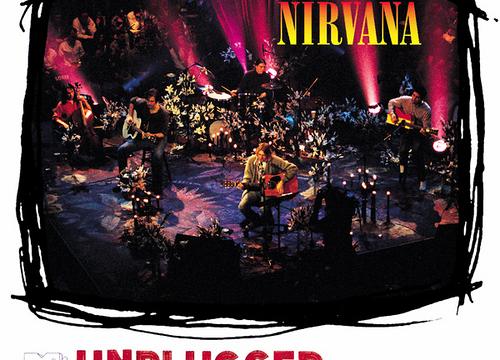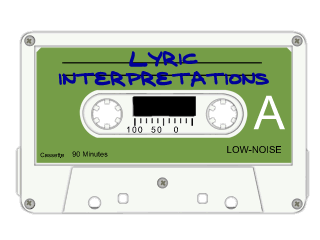The (Hidden) Impact of MTV Unplugged

Anyone in their twenties or older is invited to join me now in reminiscing about “back in the day”. The day I’m talking about is any one of the days from the late 80s to the early 00s, when MTV used to play music, at least most of the time. If you wanted to watch a music video, or learn the history of a legendary band, or see a live performance you missed, MTV was the one channel that stood out as the place where music could be seen.
We all know that it’s mostly Jersey Shore and ads now, but MTV had a heavy hand in shaping the music our generation developed. Would Nirvana’s Smells Like Teen Spirit be remembered as anything other than a brief explosion of angst without its cheap-as-dirt video in our faces every five minutes? Interesting fact: it remains the most-played music video on MTV today, and at $3,000 it is the video with the lowest production cost to make it on to MTV (until they started airing homemade YouTube clips, of course).
Pulling the Plug
MTV was always known as the place where you could watch increasingly elaborate and well-produced music videos, but in 1989 they did something which surprised a lot of people. They did a concert in a small venue, with only a tiny audience, and they made a bunch of hard rockers - Squeeze, Syd Straw, and Elliot Easton – play some of their hits on acoustic guitars.
This was new. Until now, rockers had rocked and folk singers played acoustic guitars to fields of hippies. You might find the odd ballad on an album, at the end before the remixed version of the title track (Def Leppard, we’re looking at you). The segment was a massive hit, and it paved the way for artists like Elton John and Stevie Ray Vaughan to do similar concerts in the first 13-episode season.
The idea actually came from a decade earlier, as Kevin Barber notes on his article on the profitability of the MTV Unplugged series. A benefit gig called The Policeman’s Ball in 1979 featured Pete Townshend performing two numbers acoustically. It turned into what Barber calls a “groundbreaking performance, because it was very rare to hear someone play one of their biggest songs in such a stripped-down interpretation”.
The series eventually nabbed names like Aerosmith, Paul McCartney, Sting, Elvis Costello and The Cure, to name a few. The shows were all stripped-down affairs in intimate settings, with only a handful of audience members. MTV Unplugged made history again in 1991 by inviting LL Cool J, A Tribe Called Quest, MC Lyte, and De La Soul to do the first acoustic rap session.
Something for Everyone
As you can tell from the artists mentioned above, the MTV Unplugged talent pool included someone from just about every genre. You could imagine Bob Marley doing one, or Ozzy Osbourne. The point is that the show catered to just about every music fan out there, because it showed them a new side to their favourite songs.
But it was primarily something to entice yet more teenage viewers to join the ranks of MTV-addicts, and so in 1993 when Nirvana agreed to do a few sessions for MTV unplugged, the announcement was met with hysteria. Dave Grohl said that the band wasn’t too keen on doing what all the other acts had done (naturally), and they planned to do something different.
Droves of fans showed up to try to get in, but only a lucky few did. Those who got those precious seats got something they weren’t quite expecting. There was no Smells Like Teen Spirit. Instead the band played six covers of songs few people really knew, and some of their own lesser-known material. While popular music fans were disappointed, the album remains a prize in all Nirvana fans’ collections. I bought mine when I was thirteen for $6 from a thrift store in Eugene, Oregon while on holiday visiting family, and I’ve probably listened to it a thousand times.
After MTV Unplugged
The effects of MTV Unplugged, which this article is supposed to be about, are quite plain to see. It was an evolution that took place over more than two decades, but what it gave us was a blurring of the lines between acoustic and hard performances – and the way in which we receive crossover attempts. More importantly, we’ve learnt to place an enormous value on small performances, where artists truly connect with their fans and show them something they’ve never seen before.
One thing that’s special for me about MTV Unplugged is that each performance is a once-off, and yet each continues to provide a contrast to (or sometimes to dominate) an artist or band’s style and native genre. Eric Clapton’s Unplugged performance is what made me listen to his other albums, and Kurt Cobain’s haunting vocals in Where Did You Sleep Last Night is what made me interested enough in him to learn as much as I could about the type of man who identified with such a song, and could reproduce it with so much conviction.
MTV Unplugged made it cool for a rocker to sit on a stool and play an acoustic guitar and that, in my mind, just about makes up for Jersey Shore.

 Buy the Soundtrack, Skip the Movie: Brainscan (1994)
Buy the Soundtrack, Skip the Movie: Brainscan (1994)  Let’s Go to the Hop - Ignore That Door’s Four Bunnie...
Let’s Go to the Hop - Ignore That Door’s Four Bunnie...  Forgotten Weird Music Videos of the Ancient 80s | vol 3
Forgotten Weird Music Videos of the Ancient 80s | vol 3  Forgotten Weird Music Videos of the Ancient 80s | vol 2
Forgotten Weird Music Videos of the Ancient 80s | vol 2  Forgotten Weird Music Videos of the Ancient 80s | vol 1
Forgotten Weird Music Videos of the Ancient 80s | vol 1  Let’s Chase Taylor Swift Rumors
Let’s Chase Taylor Swift Rumors  When the Beatles Touched Off a Movie War
When the Beatles Touched Off a Movie War  When Mike Bloomfield Composed a Soundtrack For Andy ...
When Mike Bloomfield Composed a Soundtrack For Andy ...  Yet Another List of Bad Song Covers
Yet Another List of Bad Song Covers  Why Does Everybody Pick On Liberace?
Why Does Everybody Pick On Liberace?  Trainspotting Soundtrack Revisited : One of the Best...
Trainspotting Soundtrack Revisited : One of the Best...  Nicki Minaj and Megan Thee Stallion: Bringing Back t...
Nicki Minaj and Megan Thee Stallion: Bringing Back t...  Quirky Songs About Los Angeles
Quirky Songs About Los Angeles  Penguin Pete’s Obligatory Penguin Cafe Orchestra Post
Penguin Pete’s Obligatory Penguin Cafe Orchestra Post  Heart | How Bad Are Those Animals?
Heart | How Bad Are Those Animals?  That Time Ronnie James Dio Saved Black Sabbath’s Bacon
That Time Ronnie James Dio Saved Black Sabbath’s Bacon  What is a Left Hand Path? - Entombed and Swedish Dea...
What is a Left Hand Path? - Entombed and Swedish Dea...  Song Analysis Corner: Convoy (1975)
Song Analysis Corner: Convoy (1975)  What’s Up With Margaritaville?
What’s Up With Margaritaville?  This Album Links Duran Duran, Andy Warhol, and Kurt ...
This Album Links Duran Duran, Andy Warhol, and Kurt ...  Your Back-To-School Playlist
Your Back-To-School Playlist  Cucumber Castle | the other Bee Gees Movie
Cucumber Castle | the other Bee Gees Movie  Danny Elfman Scores New Film; Other Movie Weirdness!
Danny Elfman Scores New Film; Other Movie Weirdness!  Sparks Is Not Crying in Their Latte
Sparks Is Not Crying in Their Latte  Travis Scott : Rapper, Cannabis Entrepreneur, Filmmaker
Travis Scott : Rapper, Cannabis Entrepreneur, Filmmaker  Anders Runestad – Author and Music Blogger
Anders Runestad – Author and Music Blogger  What If They Really ARE Giants?
What If They Really ARE Giants?  Prince’s Underrated Under the Cherry Moon
Prince’s Underrated Under the Cherry Moon  Six Degrees of Blondie
Six Degrees of Blondie  Six Degrees of: Adam and the Ants
Six Degrees of: Adam and the Ants  Discovering Beat-Club | Vintage West German Music Show
Discovering Beat-Club | Vintage West German Music Show  Eurovision Contest Winners part 2
Eurovision Contest Winners part 2  Song Analysis Corner: Snoopy vs. the Red Baron | The...
Song Analysis Corner: Snoopy vs. the Red Baron | The...  Eurovision Contest Winners part 1
Eurovision Contest Winners part 1  KISS SUXX!
KISS SUXX!  You Haven’t Met Your Last Reefer Man
You Haven’t Met Your Last Reefer Man  Ruth Underwood and the “Zappa sound”
Ruth Underwood and the “Zappa sound”  Catchy Commercial Earworms | vol 2
Catchy Commercial Earworms | vol 2  Song Analysis Corner: “Trouble Every Day” | Frank Zappa
Song Analysis Corner: “Trouble Every Day” | Frank Zappa  Blues Music For Your Great Recession
Blues Music For Your Great Recession  We Can Fix America If We Just Bring Back Schoolhouse...
We Can Fix America If We Just Bring Back Schoolhouse...  Song Analysis Corner: Istanbul (Not Constantinople)
Song Analysis Corner: Istanbul (Not Constantinople)  Music To Shoot Down UFOs To
Music To Shoot Down UFOs To  Are You Ready For AI Music?
Are You Ready For AI Music?  How Dreary Was 1970s Adult Contemporary?
How Dreary Was 1970s Adult Contemporary?  I Just Called To Say Stevie Wonder's Song Deserved a...
I Just Called To Say Stevie Wonder's Song Deserved a...  "Knock On Wood" | The Real Song To Remember From Cas...
"Knock On Wood" | The Real Song To Remember From Cas...  Dr. Dre's Not Gonna Take This Anymore
Dr. Dre's Not Gonna Take This Anymore  Apache - The Shadows | A Surf-Rock Safari
Apache - The Shadows | A Surf-Rock Safari  New Year : New Music Artists You (Probably) Haven't ...
New Year : New Music Artists You (Probably) Haven't ...  Song Odyssey | I Put A Spell on You
Song Odyssey | I Put A Spell on You  KMart and S.S. Kresge | Music Mystery?
KMart and S.S. Kresge | Music Mystery?  Did I Ever Introduce You To Horrorpunk?
Did I Ever Introduce You To Horrorpunk?  Song Analysis Corner : The Coffee Song
Song Analysis Corner : The Coffee Song  Duran Duran Finally Got Inducted
Duran Duran Finally Got Inducted  That Time Taylor Swift Broke Ticketmaster
That Time Taylor Swift Broke Ticketmaster  Parody Songs and Lawsuits | Of Interest To Aspiring ...
Parody Songs and Lawsuits | Of Interest To Aspiring ...  Worst Band Spats
Worst Band Spats  Rock and Roll Bookshelf | Corey Taylor's Seven Deadl...
Rock and Roll Bookshelf | Corey Taylor's Seven Deadl...  Lizzo, the Flute, and Racist-Sexist Republican Fallout
Lizzo, the Flute, and Racist-Sexist Republican Fallout 